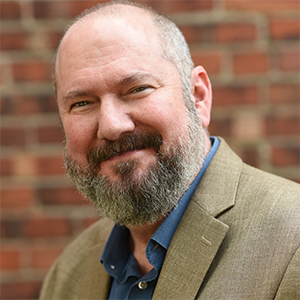BINGHAMTON, N.Y. — New York City has been illegally sending homeless people to Broome County for at least four months, Broome County officials say, and they want it to stop.
Broome County Executive Jason Garnar said in a news release that the New York City Human Resource Administration (HRA) has used a “Special One Time Assistance” (SOTA) program to send homeless people to Broome County and pay their rent for them for a time, with no intention of having the individuals or families return to New York City.
“I support all efforts to help people out of homelessness,” said Garnar. But he said the relocations being carried out are illegal. “Recipients of this program have been relocated by New York City to upstate New York, then abandoned by New York City HRA.”
(Sponsored)

Timekeeping Trap: Be Careful When “Rounding” an Employee’s Work Time
The Fair Labor Standards Act (FLSA) regulations do not require an employer to track and pay an employee for the exact number of minutes they actually work. As currently written,

Fraud Contingencies Plans Are Essential
Your business likely has a disaster recovery plan in place—procedures for handling fires, natural disasters or other crises that could disrupt operations or endanger lives. While a fraud contingency plan
According to Garnar, the HRA pays a year’s rent in Broome County, sends the homeless New York City resident there and then leaves Broome County to handle other public assistance the new resident may need.
“After being relocated by New York City, these individuals then seek medical, food, cash, and other forms of public assistance from the targeted county,” he said. “That is illegal and could have a significant impact on our taxpayers in Broome County.”
Broome County Social Services Commissioner Nancy Williams says members of her staff discovered the problem a couple weeks ago when they realized they’d been seeing people come in for assistance who didn’t need help with rent. They’ve identified five families, and think there may be a sixth. That’s some 15 people she says, just since November when the first homeless person arrived.
Assistant Broome County Attorney Howard Schultz tells BJNN he has communicated with lawyers for New York City who confirmed five of the families had been sent to Broome County as part of the program.
Schultz says he has repeatedly called on New York City to cease and desist. “You can’t deal with it by sending it someplace else,” Schultz says of the Big Apple’s homeless problem.
“Broome County believes New York City HRA’s actions are in direct contradiction to New York State Social Services Law Section 148, which requires New York City to provide assistance and care for their residents,” the county said in the release. “By relocating individuals to Broome County, New York City HRA is avoiding its responsibility to their indigent residents, which includes housing their clients within New York City.”
Williams says New York City’s HRA is not following its own rules that require eligible New York City residents to be working or generating enough income to make future rent payments.
Moreover, Schultz says that one family sent to Broome County had child-welfare issues in the past and no one notified Broome County officials so they could follow up and make sure the two children involved were receiving proper care.
Another two-person family is receiving rent for a year in Broome County despite the fact that they did not take part in required job programs when they lived in New York City.
And another person quit a job in New York City to come to Broome County under the HRA program, Schultz says.
Schultz and Williams stress that Broome County provides for those in need. Schultz made the point that dislocating families from New York City to Broome County makes it harder for children to succeed in school and if they need to be relocated back to the Big Apple when the rent money is gone, it will make things worse still.
A 3½-hour drive from New York City, Broome County has much lower rents. In Broome County, fair market monthly rents average just over $600 for a one-bedroom apartment, according to the U.S. Department of Housing and Urban Development. The same figure for New York County (Manhattan) is $1,558 a month. For the year’s rent paid by HRA, that represents a cost difference of nearly $12,000.
New York City pays even more for space in homeless shelters, Williams says. “That would be the real comparison.”
A 2017 analysis by New York City Comptroller Scott Stringer found that some homeless shelters were charging more than $400 per night and some charged as much as $549 a night.
Schultz says he doesn’t know if other upstate counties are also experiencing the arrival of people from the HRC program, however, “I don’t think it’s just Broome County.” He says it’s possible social service officials are handling similar cases across Upstate without even realizing it. “People just process it and don’t think about it,” he says.
Schultz says he is asking New York City to stop the program immediately and reimburse Broome for the expenses it has incurred caring for people who, by law, are supposed to be cared for by New York City.
“This type of “assistance” feels like something else entirely,” State Assemblywoman Donna Lupardo (D–Endwell), told BJNN in a statement. “Out of sight, out of mind is no substitute for a comprehensive strategy to address the shortage of affordable housing. What’s especially upsetting is that they did not bother to inform Broome County about this program. I will work with my colleagues to ensure this matter is fully investigated.”
Contact McChesney at cmcchesney@cnybj.com




